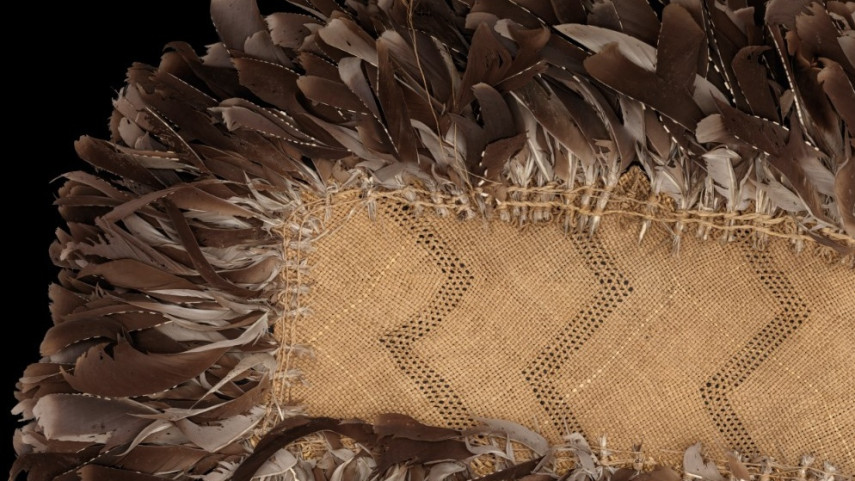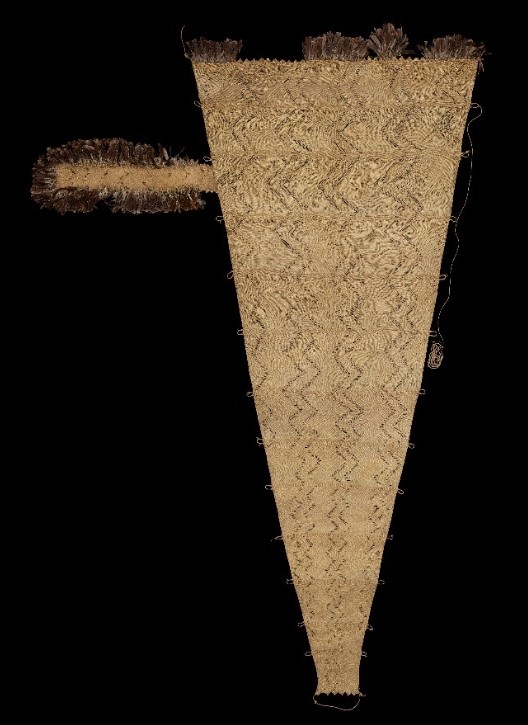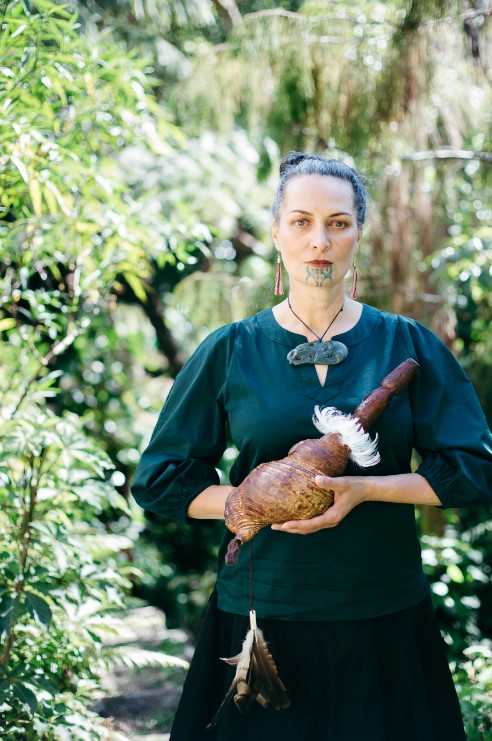
Te Rā: The Māori Sail exhibition to close after thousands of visitors

Share this story
The hugely popular Te Rā: The Māori Sail exhibition is set to conclude in Ōtautahi Christchurch with a farewell event encompassing talks and performances inspired by the taonga.
Te Rā, which means the sail in te reo Māori, is the last known customary Māori sail in the world.
The sail stands at nearly four and a half metres long and is made of harakeke, kererū, kāhu and kākā feathers and dog skin.
Woven more than 200 years ago, Te Rā is now in the collection of the British Museum in London.
Te Rā arrived in Aotearoa in June, after being carefully packed and transported, accompanied by two kaitiaki from Aotearoa New Zealand.
Te Rā: The Māori Sail opened at Christchurch Art Gallery Te Puna o Waiwhetū in July.
Pouarataki Curator Māori Chloe Cull says the exhibition has been visited by thousands of citizens, many of whom have returned for multiple visits.

The exhibition’s closing event will be held on 21 October. It will begin with a kōrero between esteemed weaver Ranui Ngarimu and Ms Cull in front of Te Rā. The kōrero will be for approximately 45 minutes.
Ms Cull says the talk will be an opportunity to reflect on the exhibition, the significance of the return of Te Rā to Aotearoa and its presence here in Ōtautahi.
“The closing will be a day to celebrate the taonga, but it also will be emotional for our staff, the community and those who worked to bring Te Rā to Ōtautahi.”
Ms Cull says Te Rā is a symbol of expertise, exploration and adaptation, as well as the centrality of voyaging to Māori culture.
Writer and musician Ariana Tikao (pictured below) will present a performance at the closing event reading from her book Te Rā: The Māori Sail, accompanied by Mat Tait's illustrations and taoka puoro soundscapes.

The book tells the imagined life story of Te Rā in a series of poems, from conception, through its journey to the other side of the world, to its reconnection with the people of Aotearoa.
Ms Tikao said she was looking forward to performing her version of the life story of Te Rā at the closing event.
“There is so much mystery surrounding Te Rā, but by giving the sail their own voice I feel it is a way to bring their story alive and to help us relate to the taoka as a living entity.”
Tickets are required for Ms Tikao’s performances, which take place at 1pm and 3pm, and can be purchased here.
After the closing weekend, a poroporoaki will be held to farewell Te Rā before it is collected by kaitiaki from Tāmaki Paenga Hira Auckland War Memorial Museum, where it will be exhibited.
While it is unknown how the sail originally arrived in Britain, Te Rā will return to the British Museum on the completion of its exhibition in Tāmaki Makaurau Auckland.
Photo Caption
Makers unknown Te Rā [the sail] c. 1770–1800. Harakeke, kererū, kāhu and kākā feathers, dog skin.
On loan from the Trustees of the British Museum. © Whakaarahia anō te rā kaihau Te Rā Project.
Photo: Cultural Heritage Imaging
